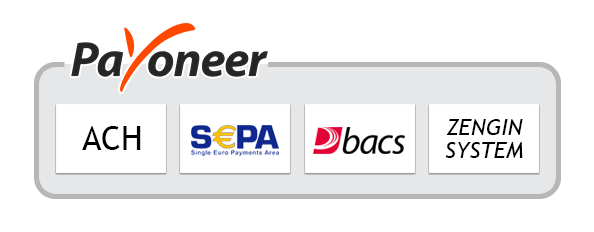Table of Contents
Introduction
New York, NY – March 06, 2025 – The Global Stationary Battery Storage Market is poised for substantial growth, driven by a significant increase in demand across various sectors. Currently valued at USD 95.2 billion in 2024, the market is forecasted to surge to around USD 661.9 billion by 2034, achieving a robust CAGR of 21.4%.
This impressive expansion is fueled by the market’s increasing popularity, especially in the adoption of lithium-ion batteries, which dominate due to their efficiency and capacity for high energy storage. These batteries are integral in applications ranging from electric vehicles to renewable energy systems, underscoring their importance in contemporary energy solutions.
Market opportunities are expanding notably in regions like Asia-Pacific, which leads in market size, and Europe, where growth is expected to be the fastest due to energy efficiency reforms and rising renewable energy integration. Government incentives, technological advancements, and the declining costs of batteries are playing pivotal roles in market expansion.

Key Takeaways
- The global stationary battery storage market is projected to grow from USD 95.2 billion in 2024 to USD 661.9 billion by 2034.
- The market is expected to expand at a CAGR of 21.4% from 2025 to 2034.
- Lithium-ion batteries held a dominant 57.3% market share in 2024.
- Hydrogen and Ammonia Storage systems accounted for 32.2% of the market share in 2024.
- Grid Services dominated the market, holding a 56.3% share in 2024.
- The Commercial & Industrial sector captured the largest share, accounting for 68.2% in 2024.
- The Asia-Pacific (APAC) region dominated the stationary battery storage market, holding a 43.6% market share in 2024, valued at approximately USD 41.5 billion.
➤ For a deeper understanding, click on the sample report link: https://market.us/report/stationary-battery-storage-market/request-sample/
Report Scope
| Market Value (2024) | USD 95.2 Billion |
| Forecast Revenue (2034) | USD 661.9 Billion |
| CAGR (2025-2034) | 21.4% |
| Segments Covered | By Battery (Lithium Ion (LFP, NMC, Others), Sodium Sulphur, Lead Acid, Flow Battery, Others), By Type of Energy Storage (Hydrogen and Ammonia Storage, Gravitational Energy Storage, Compressed Air Energy Storage, Liquid Air Storage, Thermal Energy Storage), By Application (Grid Services, Behind the Meter, Off Grid, Others), By End-User ( Residential, Commercial And Industrial, Others) |
| Competitive Landscape | BYD, CATL, Duracell, Durapower, Exide Technologies, GS Yuasa, Hitachi, Hoppecke Batteries, Johnson Controls, Leclanche, LG, Panasonic, Panasonic Corporation, Philips, Samsung SDI, Siemens, SK Innovation, Tesla, Toshiba Corporation, Varta |
➤ Directly purchase a copy of the report – https://market.us/purchase-report/?report_id=141852
Emerging Trends
- Virtual Power Plants (VPPs): Virtual power plants are becoming more prevalent. They use software to connect and coordinate various energy resources, effectively managing and dispatching power from these distributed systems as needed to improve grid reliability and efficiency.
- Energy Storage as a Service (ESaaS): This model is gaining traction, offering energy storage solutions on a subscription basis. It allows businesses and consumers to benefit from energy storage without the upfront costs associated with purchasing and maintaining battery systems.
- Advanced Battery Technologies: There’s a significant focus on developing and commercializing advanced battery technologies like solid-state batteries. These promise higher energy densities, improved safety profiles, and longer lifespans compared to traditional lithium-ion batteries.
- Long-Duration Storage Technologies: Research and innovation are ramping up in long-duration energy storage (LDES) technologies, which can store energy for several hours to days. This is crucial for managing intermittent renewable energy sources and ensuring a consistent energy supply.
- Sustainability in Energy Storage: There’s an increasing push towards enhancing the sustainability of battery storage solutions. This involves improving the recyclability of batteries, reducing the environmental impact of battery production, and using more sustainable materials in battery manufacture.
Use Cases
- Grid Services: Stationary batteries play a crucial role in grid services by providing frequency regulation, voltage support, and managing peak loads. This helps stabilize the grid and integrate renewable energy sources effectively, enhancing overall reliability and efficiency.
- Backup Power: Commonly used across various sectors, stationary batteries provide essential backup power, ensuring continuity in operations during outages and helping manage system failures.
- Behind-the-Meter Applications: These batteries are used in residential, commercial, and industrial settings for energy management, allowing consumers and businesses to store excess power for later use, optimize energy costs, and increase energy independence.
- Renewable Energy Integration: Stationary batteries store energy generated from renewable sources like solar and wind during peak production times. This stored energy can then be used when production is low, thereby smoothing out the variability of renewable energy sources.
- Off-Grid Applications: Especially in rural and remote areas where grid access is unreliable or unavailable, stationary batteries provide a vital energy solution. They enable the use of renewable energy systems in these locations, enhancing energy access and promoting sustainability.
Major Challenges
- High Initial Costs: The setup and operational costs for stationary battery storage systems are considerable. This includes the expenses related to purchasing and installing the batteries, which can be a barrier to entry for many potential users.
- Technological Limitations: Current battery technologies, such as lithium-ion and lead-acid, have limitations in terms of energy density and efficiency. These can affect their performance and reliability over time and may necessitate frequent replacements.
- Environmental Concerns: The manufacturing and disposal of batteries pose significant environmental risks. Issues such as the safe disposal of battery chemicals and the environmental impact of mining the raw materials needed for battery production are of concern.
- Supply Chain Vulnerabilities: The stationary battery storage market is susceptible to disruptions in the supply chain. This can be due to geopolitical tensions, trade restrictions, or natural disasters that affect the availability of crucial materials.
- Regulatory and Compliance Challenges: Navigating the complex regulatory frameworks that govern the production and disposal of batteries can be difficult. These regulations can vary widely by region and can affect how batteries are manufactured, used, and recycled.
Market Growth Opportunities
- Renewable Energy Integration: The continuous push toward integrating renewable energy sources like solar and wind into the grid is significantly driving the demand for stationary battery storage solutions. This trend is bolstered by increasing governmental support through incentives and investments in renewable infrastructure.
- Electric Vehicle (EV) Market Expansion: The growing adoption of electric vehicles is creating substantial opportunities for the stationary battery storage market. Used EV batteries can be repurposed for stationary storage applications, providing a cost-effective storage solution while supporting grid services and renewable energy integration.
- Technological Advancements in Battery Storage: Innovations in battery technology, particularly in lithium-ion and solid-state batteries, are enhancing the efficiency, capacity, and safety of stationary storage systems. This technological progression is expected to open new applications and markets for stationary battery storage systems.
- Behind-the-Meter Applications: There is increasing demand for energy storage solutions in residential, commercial, and industrial settings. Stationary batteries are being used to manage energy costs, enhance resilience, and increase energy independence for homeowners and businesses alike.
- Grid Modernization Efforts: As grids around the world are modernized to handle more renewable inputs and improve energy efficiency, the need for advanced energy storage solutions is becoming critical. Stationary battery storage plays a pivotal role in these modernization efforts, helping to stabilize grids and manage energy flows more effectively.
Recent Developments
1. BYD
- BYD launched its next-generation Blade Battery in 2023, which is being integrated into stationary energy storage systems (ESS). The Blade Battery is known for its high energy density, safety, and long cycle life, making it suitable for large-scale grid storage.
- In 2023, BYD introduced a modular energy storage system called “BYD Cube,” which offers scalable solutions for utility-scale projects.
2. CATL (Contemporary Amperex Technology Co. Limited)
- CATL introduced its TENER energy storage system in 2023, featuring zero degradation over the first five years of use and a 20-year lifespan. This innovation is targeted at large-scale renewable energy storage.
- CATL developed sodium-ion batteries, which are being tested for stationary storage applications due to their lower cost and
- abundance of raw materials.
3. Duracell
- Duracell launched its PowerSource Pro line of portable power stations in 2023, which can be integrated with solar panels for off-grid energy storage.
- Duracell introduced a new line of lithium-ion batteries for residential energy storage systems.
4. Exide Technologies
- Exide Technologies launched its NexSys ESS in 2023, a modular battery system designed for industrial and renewable energy storage applications.
- The company introduced advanced lead-acid batteries with improved cycle life for stationary storage.
5. Durapower
- Durapower launched its DP Omni battery system in 2023, designed for both stationary and mobile energy storage applications. The system features advanced thermal management and high energy density.
- In 2022, the company introduced a hybrid ESS solution combining lithium-ion and supercapacitor technologies for fast-response grid applications.
Conclusion
The Stationary Battery Storage Sector has seen remarkable growth and innovation between 2022 and 2024, driven by the global push for renewable energy integration and grid stability. Companies like BYD, CATL, Duracell, Durapower, and Exide Technologies have played pivotal roles in advancing the industry through cutting-edge technologies, strategic partnerships, and large-scale deployments. Innovations such as BYD’s Blade Battery, CATL’s sodium-ion batteries, and Durapower’s hybrid ESS solutions have significantly improved energy density, safety, and cost-effectiveness.
Discuss Your Needs With Our Analyst
Please share your requirements with more details so our analyst can check if they can solve your problem(s)





